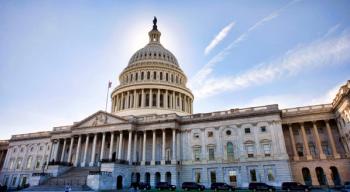
Essential benefits still being debated
All health plan products offered through state health insurance exchanges will be required to provide an essential health benefits package
ALL HEALTH PLAN PRODUCTS offered through state health insurance exchanges will be required to provide an essential health benefits package as determined by the U.S. Department of Health and Human Services (HHS). Once defined, these essential health benefits will directly influence healthcare spending and premium rates.
Working from a list of categories of benefits, HHS is tasked with determining what qualifies as an "essential" health benefit, based on the scope of benefits offered by a typical employer plan.
"It's the basis for determining what it means to have health coverage or not to have health coverage," says Ian Spatz, a senior advisor in the national healthcare practice of Manatt, Phelps & Phillips, LLP, and Manatt Health Solutions in Washington, D.C. "Especially if you are going to be in a health benefit exchange and there's a subsidy, what's the government going to be paying to subsidize it? There is almost no more important issue in healthcare than what it means to be covered."
The IOM will not define specific service elements of the benefit package. Instead, it will review how insurers determine covered benefits and medical necessity and will provide guidance on the policy principles to take into account. Health plans will be examined for: appropriate balance among categories of care; the healthcare needs of diverse segments of the population; and nondiscrimination based on age, disability or expected length of life.
There's plenty of lobbying going on from various groups that want their preferred services included for coverage as an essential benefit. The IOM's final report is expected this fall.
Benefits drive premiums
Karen Bender, chair of the American Academy of Actuaries' Individual and Small Group Market Task Force, says adequately defining essential health benefits is critical. The richer the essential benefits package, the higher the premiums. The ultimate cost of healthcare reform will depend on the ultimate cost of premiums, for which the federal government will provide subsidies.
Jonathan Gruber, an economist at the Massachusetts Institute of Technology (MIT), testified before the IOM committee, saying that for every 10% increase in the cost of the essential benefits package, the cost of government subsidies would rise by 14.5%, or $67 billion over 10 years. Ten percent higher costs also would cause the number of insured to fall by 1.5 million.
"If the premiums get to a point where they would be deemed unaffordable, then people can elect not to participate and then not be subjected to any financial penalty," Bender says. "That has the potential impact of not covering as many people as the law initially anticipated covering. It really is a daunting task they've been assigned."
Emma Hoo, director of Value-Based Purchasing for the California-based Pacific Business Group on Health, says the end goal is to create some consistency among offerings within the health insurance exchanges and to establish guidelines for both carriers and employers to track.
Spatz, however, says he remains skeptical the federal government will come up with a definition of essential benefits that is sufficiently specific and easy for states to implement as they assemble their health benefit exchanges.
"It puts the states and health plans in an interesting place, because under the Affordable Care Act, if a state wants to insist its health plans cover benefits deemed not essential, the state has to pay the difference," Spatz says. "States are in a position of saying 'We'd like to interpret the guidelines or rules broadly so we can bring in things we'd like to mandate as a state.'"
The federal government, he adds, will be looking at what states consider essential. He anticipates the process will move from the federal government to the states, and perhaps back to the federal government to make final determinations on what essential benefits are included.
"Some decisions are more philosophical as to where we think as a society we should be in sharing the burden of certain costs and where it comes to individuals making planning and expenditure decisions," Spatz says.
In the meantime, there are things health plans can do to prepare, such as gaining clarity on the broad categories of services, while businesses will want to compete on a level playing field.
"States and health plans can be working to get more definition so there isn't a big scramble in 2013 as they are trying to approve plans," Spatz says. "Now is the time to speak up. States have things they routinely mandate they want to see included."
Most health plans probably don't want to go out on a limb and include outlying services in their benefits package-which other competing plans likely won't offer anyway-because it will drive up prices and potentially put them at a competitive disadvantage.
Newsletter
Get the latest industry news, event updates, and more from Managed healthcare Executive.





















































